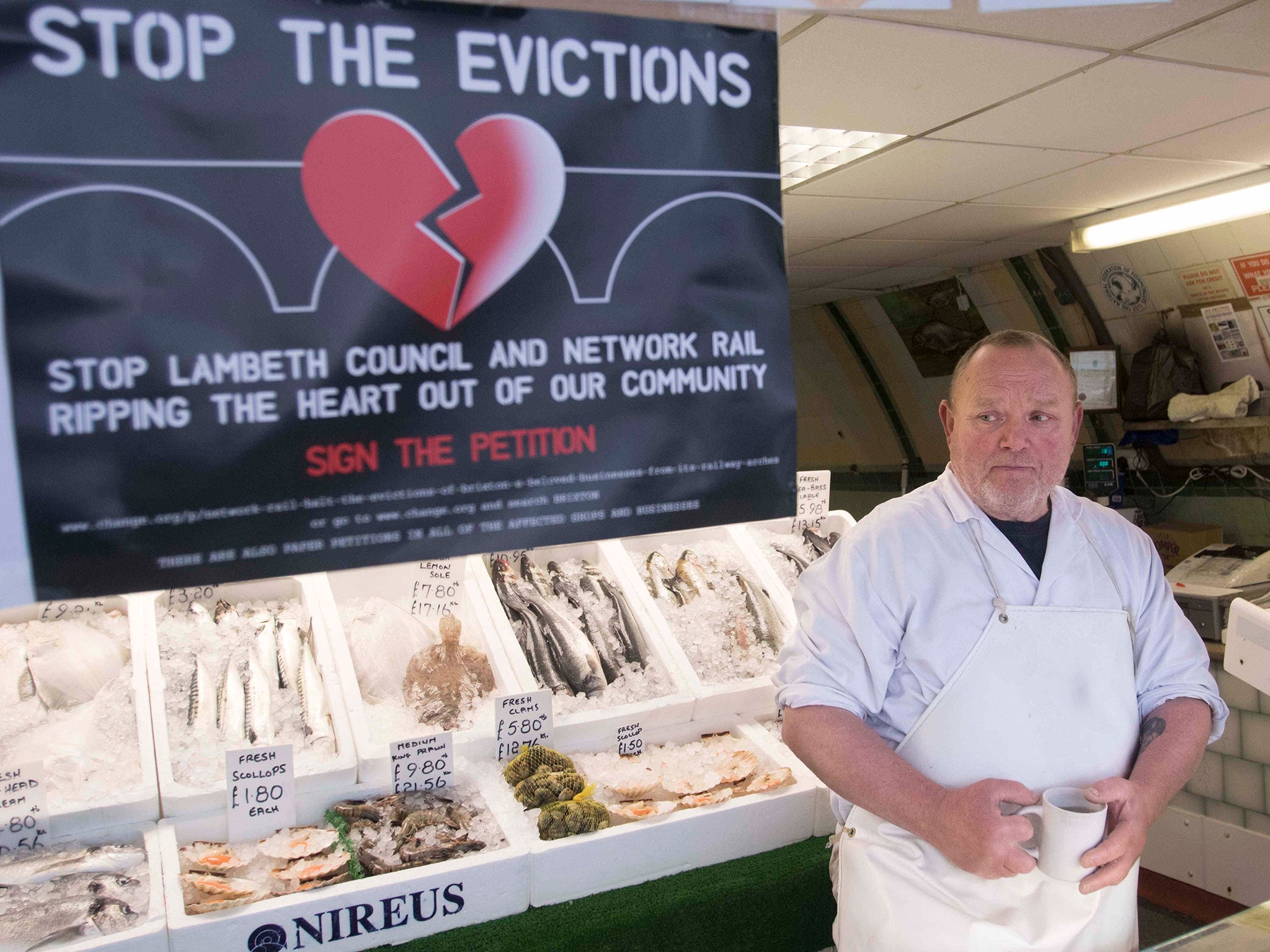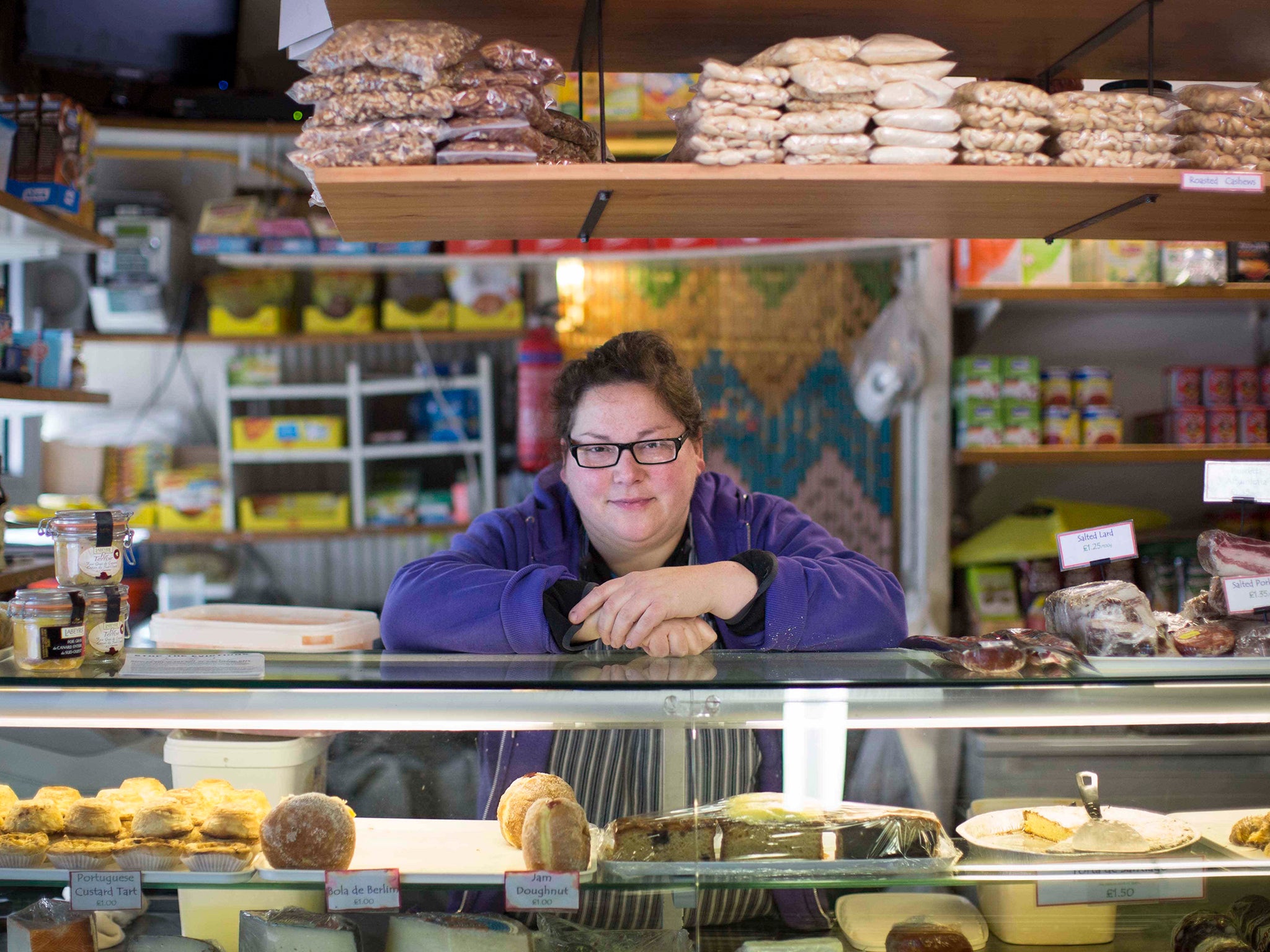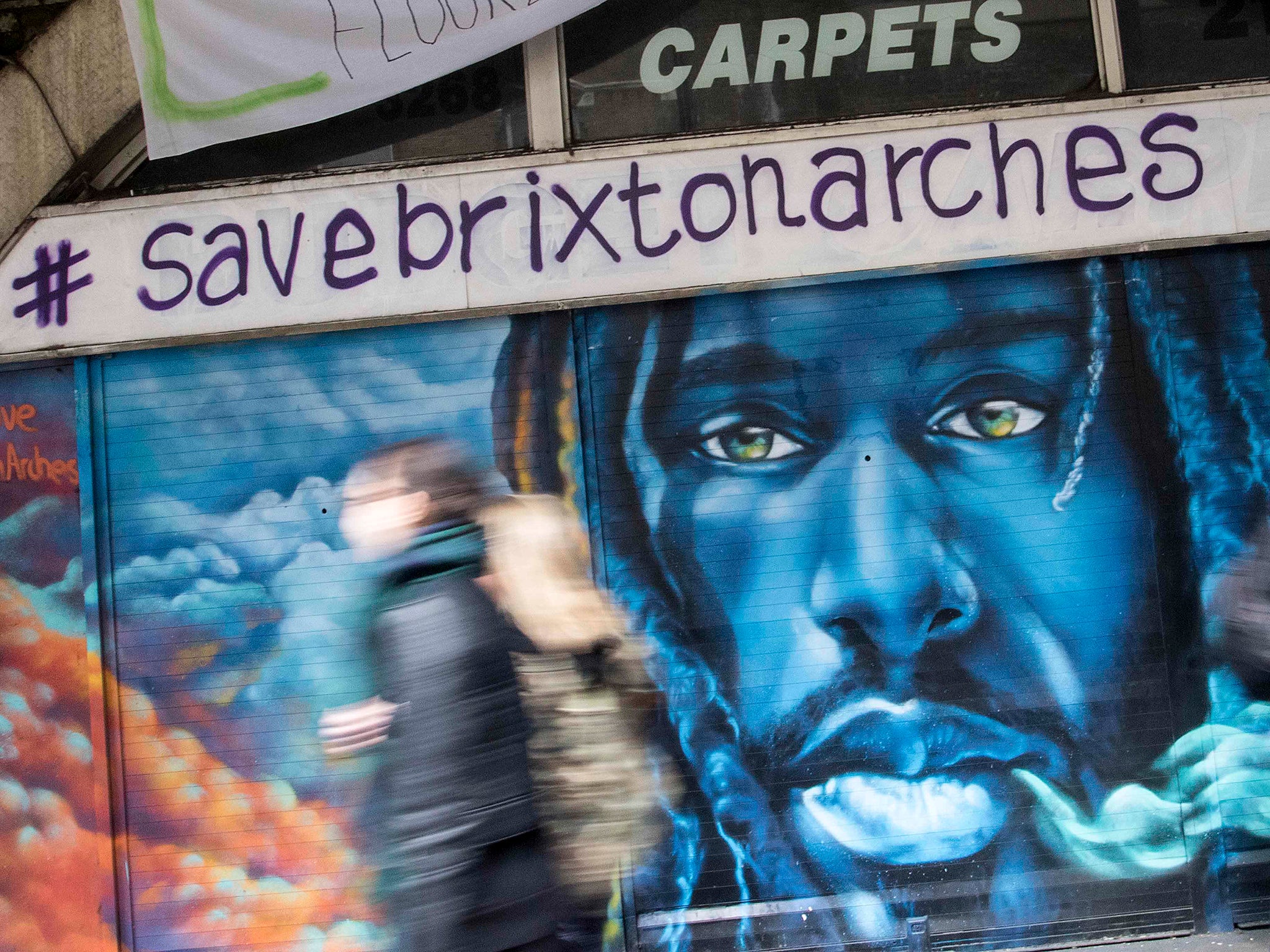Battle for Brixton: Residents and retailers fight back as gentrification pushes poorer families out the area
Locals and businesses fear development plans for the area will price them out

Your support helps us to tell the story
From reproductive rights to climate change to Big Tech, The Independent is on the ground when the story is developing. Whether it's investigating the financials of Elon Musk's pro-Trump PAC or producing our latest documentary, 'The A Word', which shines a light on the American women fighting for reproductive rights, we know how important it is to parse out the facts from the messaging.
At such a critical moment in US history, we need reporters on the ground. Your donation allows us to keep sending journalists to speak to both sides of the story.
The Independent is trusted by Americans across the entire political spectrum. And unlike many other quality news outlets, we choose not to lock Americans out of our reporting and analysis with paywalls. We believe quality journalism should be available to everyone, paid for by those who can afford it.
Your support makes all the difference.Three decades after the Brixton riots where police became the focus of community anger, the south London district is once again at the centre of social upheaval – and this time anger is being directed at landlords.
A sign outside the Guinness Trust Estate in Loughborough Park says the charity is “building on a proud past to create a positive future for existing, and new, residents” through a £75m regeneration scheme. At the entrance a rather different greeting awaits in the form of ten foot high metal barriers either side of the path into the estate which is closely monitored by 16 burly security guards who blocked the Independent from coming in.
The 1930s estate of 390 social rented flats is in the midst of transformation into 487 “modern, attractive and spacious apartments”. It has become one of the focal points of the ongoing ‘gentrification’ protests in Brixton where traders as well as residents are facing eviction - and with it total uncertainty about their future.

The Trust’s regeneration strategy began a decade ago at which point housing association tenants with full-time tenancy rights were no longer taken on. Newcomers were instead placed on Assured Shorthold Tenancy (AST) agreements – some were evicted in 2012 and told the Trust had no obligation to rehouse them.
A handful of new blocks are completed but older blocks remain and 20 assured shorthold tenants are refusing to move. Clothes, chairs and toys can be seen on some of the balconies that overlook Barrington Road interspersed with many flats already boarded up.
Of the 487 new units 211 will be social rent with 276 available for “affordable rent and shared ownership”, according to the Trust. The charity said the new rent for a one-bedroom property is £94 a week compared with £93 previously though residents said other charges, such as a lift service charge of £20, were being added.

The Trust said “the majority” of tenants who have left the estate have found homes “elsewhere in London” but did not say what has happened to those moved out of London altogether. A spokesman said the extra security and fencing was in place for two days last week to move heavy vehicles off site.
A similar situation is set to hit the Cressingham Gardens Estate next to Brockwell Park just over a mile away and three years into a consultation period on regeneration.
“Lambeth [council] really has been torturing us for that long with its absolute incompetence and is finally due to make a decision as to the extent of redevelopment in June of this year,” said resident Joanne Parkes.
Locals sent Streatham’s Labour candidate Chuka Umunna an open letter last week to “dispel the myths” about why the council say regeneration is needed. Residents on both estates say they wish their homes had been properly maintained rather than, as they belief, left neglected as an excuse to bring in the bulldozers. Lambeth Council, which owns Cressingham, believes many of the estate’s problems are caused by structural defects.
A council spokesman said: “Over 20,000 people are on the housing waiting list in Lambeth and 1,800 homeless families are in temporary accommodation. Lambeth is committed to providing 1,000 extra homes at council rent levels over the next four years. But, as there is not enough free, undeveloped land to build the new homes needed, the council is reviewing all the land available to it.
“After two years of conversations with [estate] residents it is time to move forward with viable options for Cressingham Gardens. There simply isn’t the money to refurbish the estate, but by rebuilding the council can access finance from elsewhere that would allow everyone on the estate to be rehoused in a home which meets their needs and which can increase the amount of genuinely affordable social housing on the estate for local families.”
Residents are not the only ones in the area facing eviction. Traders underneath the Brixton arches were told they have to leave by the end of this year so Network Rail, who owns the leases, can refurbish all the premises. Bob Kheddache, who runs Café Rio, is one of many traders who believe they will never be able to afford to return.

“I worked for years to come to Brixton,” the 53-year-old said, “and now they are kicking us out. It’s cruel. Who’s going to come in after us? Starbucks, Costa, that’s who. It’s cruel.”
More than 20,000 have signed the Save Brixton Arches petition and the community united last weekend when retailers closed for two hours to join the Reclaim Brixton march.
Fishmongers LS Mash and Son have been trading for 85 years, the oldest family-run business in the area. Lorne Mash says the uncertainty is terrible for both traders and their families and people’s health are starting to suffer.

“We’ve had meetings and more meetings with the council and Network Rail, but still don’t know what’s happening. The latest is mid-May: that’s when we’ll apparently find out what’s going. The uncertainty is horrible. There’s Chinese whispers going around that the rent after refurbishment will be tripled.”
The rumours prompted Lorne to place a giant banner above his shopfront declaring: “Triple rents?? You Must Be Squidding!”
He seems almost resigned to never coming back. “National Rail has done the same at Waterloo, Vauxhall, London Bridge and Clapham. They are very pleasant people but they know exactly what they’re doing. All we know is that they want to take our livelihoods away. I’m 63 now so I’m not getting another job. They say it will take a year and even if it does my customers will have gone elsewhere during that time.
“The stress for everyone is incredible. People are getting ill already and marriages are being affected. I’ve got a mortgage so I could lose my home as well as my job. That’s the reality of it.”
Network Rail say it will take at least a year but have faced criticism for not revealing whether rents will rise dramatically once the work is complete. A spokesman said none of the traders would have to leave “before March 2016” and that the company is “currently reviewing the possibility of phasing the scheme as well as future rents and compensation packages”.
A stone’s throw from the arches is Brixton Village market – home to an eclectic mix of coffee shops, restaurants and other retailers where business is booming, but which is said by traders to occasionally be made a scapegoat for ‘gentrification’. Six years ago when Daniel Fiteni arrived with his business partner to open The Burnt Toast café he had a choice of 17 empty units. Today more than 250 businesses are queuing to get in. One of the last to arrive, Champagne + Fromage, is arguably an example of how the market has transformed in recent years.
“We worked 90 hours a week for over two years to get the business up and running so we could prosper,” Mr Fiteni said, who expanded three years later to open up The Joint restaurant next door. “There’s real life in the market again. If you want to come and eat good food or have a good coffee there’s a market here for everyone. People are offering big money to be here, but no one wants to give up their space. Everyone wants to ride the wave of being busy.”
The Australian entrepreneur has seen from his shop window how Brixton is changing. “Compared to six years ago, we serve less than half the Afro-Caribbean and white families today than we did then. Either because they don’t live here anymore or it’s a weekend market now not a day trade market. Everyone comes here at night. We don’t get that young family folk that we used to during the day.”
Mr Fiteni, 34, said the change was largely down to the residential transformation. He said he could “100 per cent” understand the anger of residents in areas like Loughborough Park and was happy last weekend’s march went ahead. “I live here, I’ve got a young family, it can be tough.”
Singer Rhoda Dakar attended the protest and has lived in a block of flats a stone’s throw from the arches since 1963. Her parents moved to Brixton via Hampstead following Britain’s first race riots in Notting Hill five years earlier. Large immigrant family neighbours of her youth are gone, gradually replaced by wealthier young couples and professionals who Rhoda said appear startled when seeing a black face.
“I do feel for them because they should be in Clapham or Wandsworth, but the reason they’re not is because the people who live there now have moved from Chelsea and Fulham, who are moving out from Knightsbridge and Mayfair. The trouble is when you get to Brixton there is nowhere for the people here to go – and that’s the problem. I don’t blame them, everyone has to live somewhere.”
Mother of two Ms Dakar, 55, said her greater fear is for her children and their generation. “The fight isn’t for me, it’s for them. There’s not going to be anywhere they can afford to live around here. Where are they going to go?”
Join our commenting forum
Join thought-provoking conversations, follow other Independent readers and see their replies
Comments